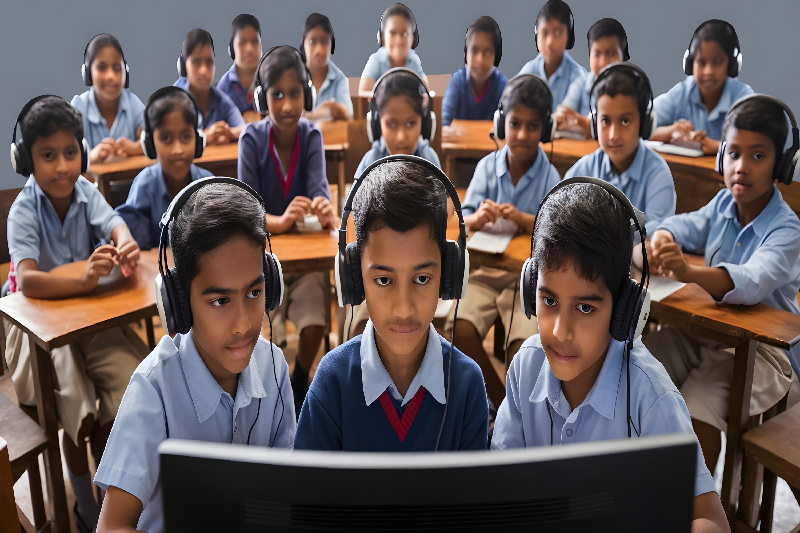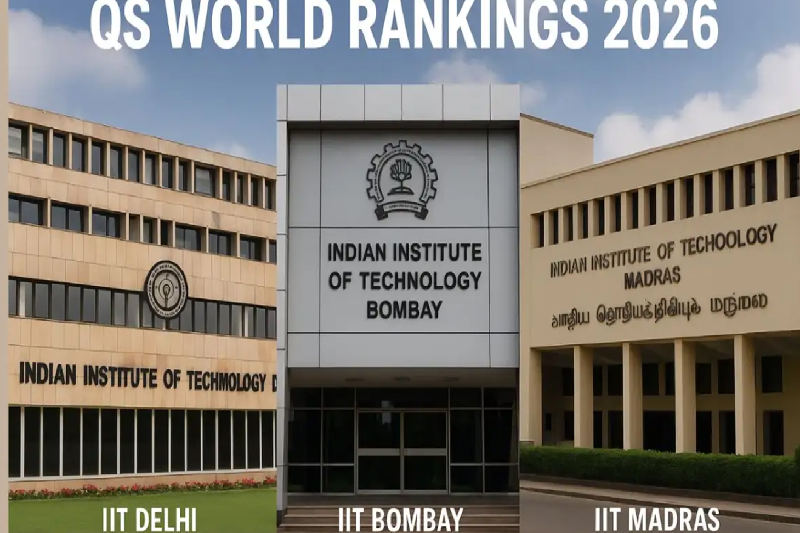
Delhi’s AQI Crisis: Why Schools Are Split Between Hybrid and Offline Classes — Educators Raise Concerns
Delhi’s air quality crisis has once again pushed the education system into an urgent debate on how to balance student health with academic continuity. As the city’s Air Quality Index (AQI) shot up from 362 on Monday to an alarming 425 by Tuesday morning, the Delhi government activated hybrid learning for younger students, while keeping older students in classrooms. The decision has sparked mixed reactions among teachers, principals, and education experts, revealing broad concerns over equity, safety, and long-term planning.
Under the government directive, all government, government-aided, and recognised private schools have shifted Classes up to 5 to a hybrid model—allowing children to attend online or offline depending on feasibility. Meanwhile, students in Classes 6 to 12 must continue attending offline classes entirely. The move comes after the Centre enforced Stage III of the Graded Response Action Plan (GRAP), a set of emergency measures implemented when air pollution levels become hazardous.
The responses from educators highlight a deep divide: while some view the split model as logical for protecting younger students, others believe it is unfair, impractical, or incomplete.
Hybrid Learning for Younger Students: A Justified Shield or Temporary Fix?
Hybrid learning aims to protect the youngest and most vulnerable children, who often struggle with respiratory sensitivity during extreme pollution days. The model allows flexibility—parents can choose to send their child to school or keep them home for online instruction.
“It makes sense from a health and developmental standpoint.”
Ritu Singh, Coordinator for Early Years at Ridge Valley School, Gurgaon, supports the hybrid approach for juniors. According to her, younger children can manage short-term online classes without major learning disruption. The flexibility provides necessary safety at a time when their developing lungs face heightened risks.
However, she points out a crucial gap: the stark difference in digital access among families. Not all households have the infrastructure, devices, or familiarity with online learning platforms.
Ritu warns that without clear government-defined guidelines and proper digital support, hybrid learning may leave some children behind.
She further adds that senior students, especially those preparing for board exams and practical assessments, need uninterrupted in-person guidance. For them, offline classes remain indispensable.
A Case for Going Fully Online: “All students are precious.”
Not all educators believe the split system is fair.
Anju Verma, Senior PGT English at DAV Pushpanjali, argues that health risks do not discriminate by age. She stresses that students in Classes 6 to 12, despite being older, face equal vulnerability to toxic air.
“Younger children need consideration, but seniors must be protected too.”
Verma supports going fully online for all classes, at least for a short period until pollution levels stabilise. According to her, doing so would prevent academic loss while significantly reducing health risks.
She adds that adolescents often step outdoors after school hours, exposing themselves to prolonged pollution even when their school attendance is mandatory. A unified online approach, she argues, would ensure fairness, safety, and practicality.
The Critique: “This decision is flawed and unfair to families.”
A strong dissent comes from Aditi Misra, Principal of DPS Sector-45, Gurgaon, who calls the hybrid/offline split “a flawed decision.”
She emphasises that:
- Pollution affects everyone, regardless of age.
- The assumption that only younger children need online protection is scientifically inaccurate.
- The policy creates unrealistic expectations for parents, especially working professionals.
Supervision challenges for young learners
Misra highlights a major oversight: young children learning from home require full-time adult supervision. Working parents cannot stay home, making hybrid learning impractical for many families. This forces parents to send children to school even when the AQI is hazardous, defeating the purpose of offering a hybrid option.
“Home does not always mean safety.”
Misra also raises a point often overlooked in public discussions: when younger children stay home, they frequently step outdoors for unsupervised play.
While school attendance limits exposure to a brief 40–45 minutes outdoors, being at home may inadvertently increase their pollution exposure—ironically undermining health protection efforts.
Misra strongly advocates for a long-term, structured environmental policy that addresses pollution at its roots rather than relying on school closures and temporary adjustments every winter.
A Middle Path: Balancing Practicality and Protection
Some educators believe the government’s decision is a starting point but needs refinement.
Huda Ansari, a teacher at Manav Mandir’s Smt NRP Sheth Multipurpose High School in Mumbai, suggests a blended approach for both junior and senior classes.
“Hybrid learning is sensible—but seniors need flexibility too.”
According to her, while hybrid learning is logical for early grades, senior students could benefit from at least one online day per week during severe pollution spikes. This would reduce exposure without compromising lesson continuity or exam preparation.
Ansari argues that such a balance would better support student well-being while reducing the pressure on parents, teachers, and school administrations.
Health vs. Education: The Core of the Debate
The ongoing discussion underscores a deeper tension: how should schools respond to an environmental crisis that intensifies every winter?
Vulnerability vs. Academic Pressure
- Younger children are medically more vulnerable to respiratory harm.
- Older students, especially Class 10 and 12, face crucial board exams and practicals that demand in-person learning.
Families are left juggling both concerns simultaneously. Educators note that neither option—full online learning nor compulsory offline classes—perfectly addresses the issue.
The Larger Problem: Short-Term Solutions for a Long-Term Crisis
The hybrid model may provide temporary relief, but experts argue it does not address the underlying cause: Delhi’s recurring air pollution emergency.
Without:
- Robust digital infrastructure
- Long-term schooling policies
- Sustainable environmental regulation
schools will continue facing the same crisis year after year.
Educators across NCR agree on one point: the current model is an uneasy compromise, not a sustainable solution.
Conclusion: Should Schooling Decisions Be Age-Based or Universal?
As pollution peaks again, one question remains central to the debate:
Should schooling decisions during severe pollution be age-specific, or should all students follow a uniform model until AQI levels improve?
For now, Delhi’s hybrid model stands as a temporary, imperfect balance.
But unless long-term policies evolve, the city’s children—regardless of age—will continue to bear the consequences of its annual pollution crisis.



